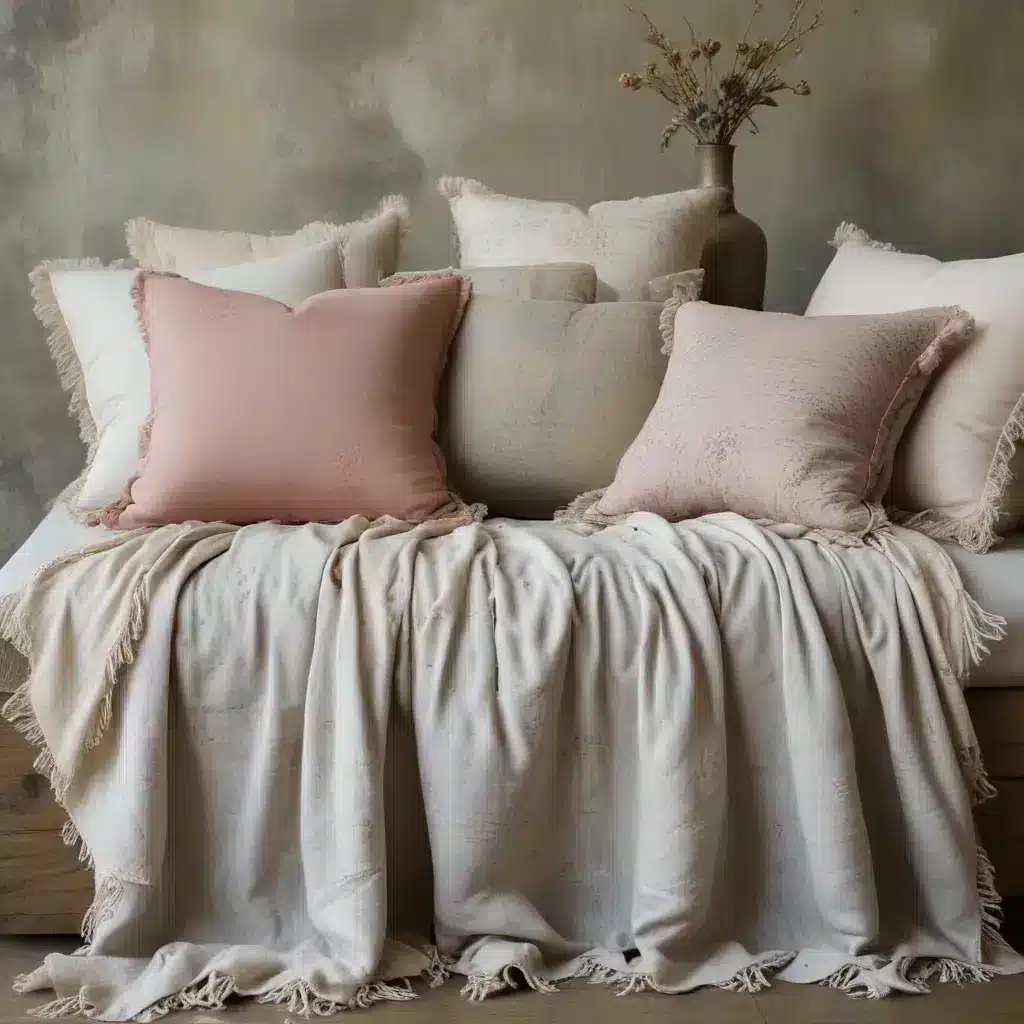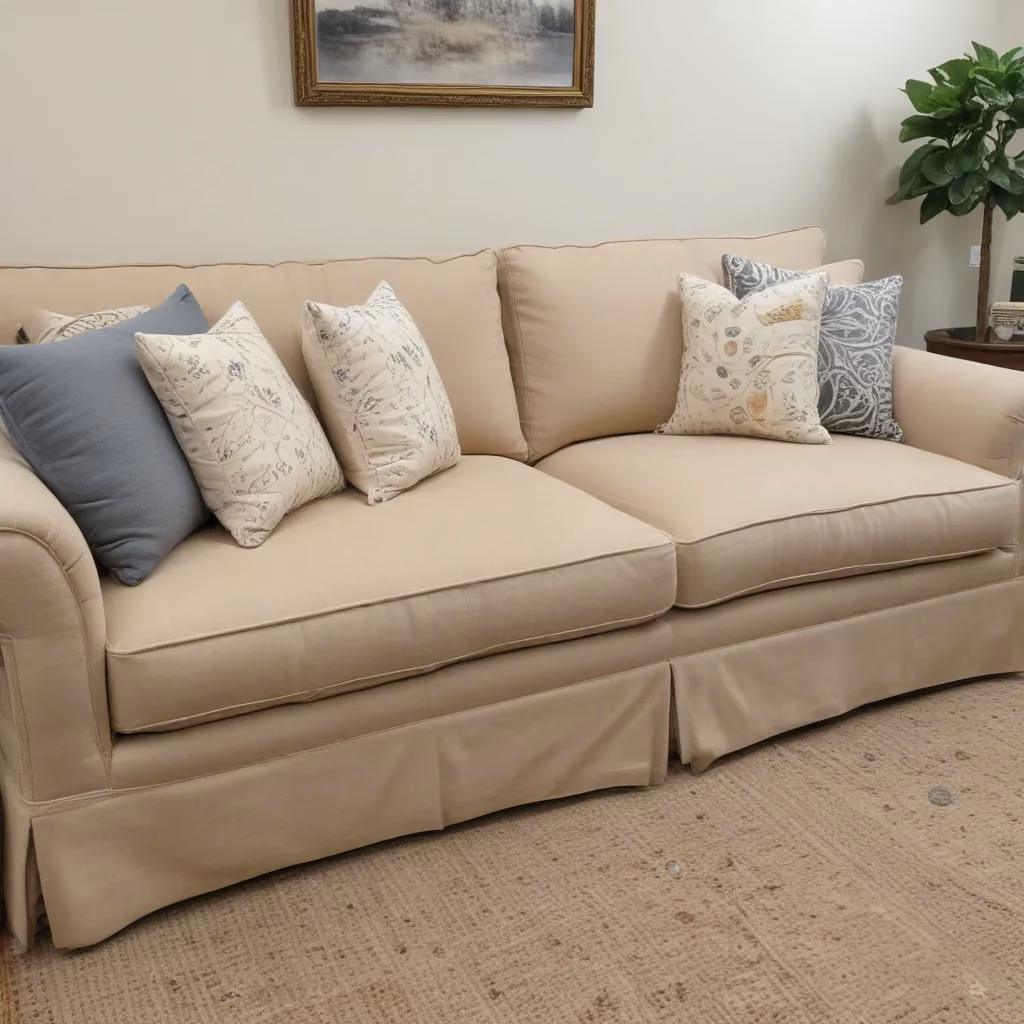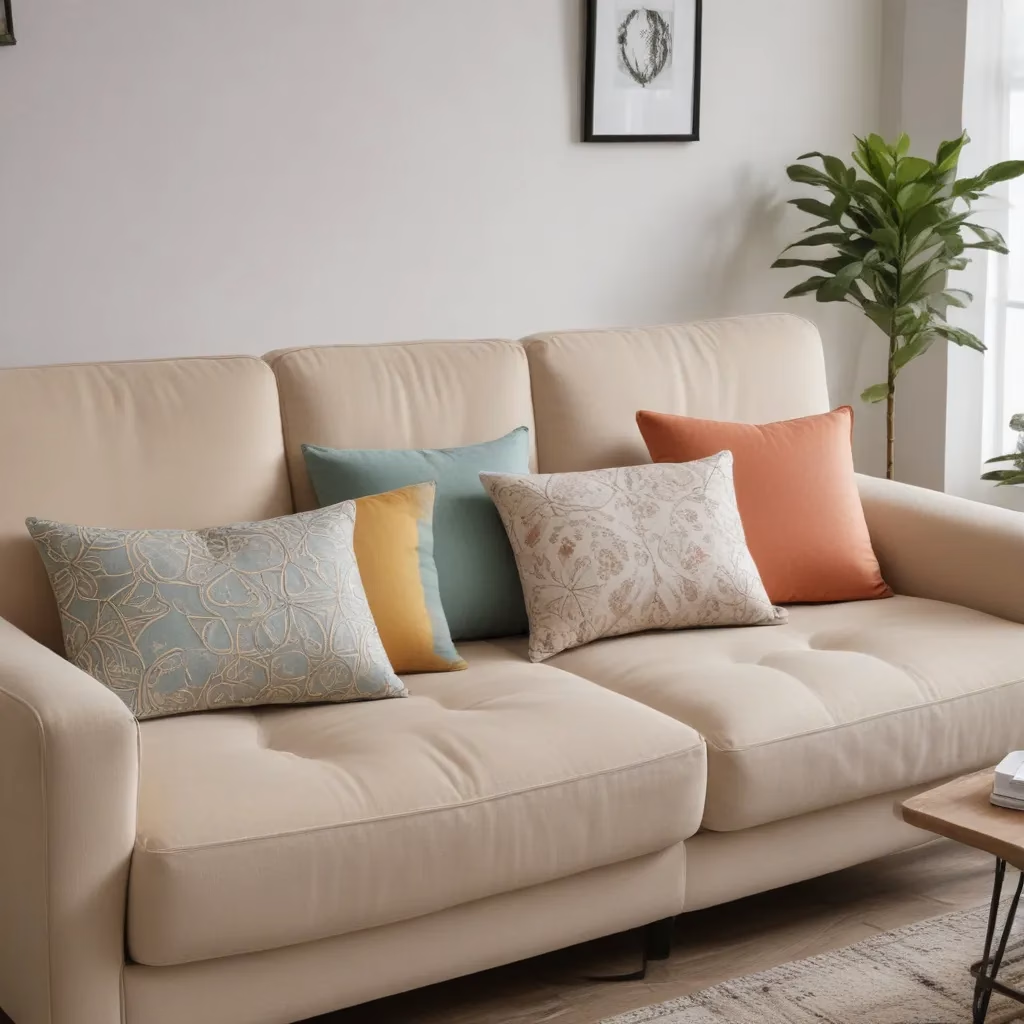
The Allure of Aged Elegance
As a furniture specialist with years of experience, I’ve witnessed countless trends come and go. But there’s one style that continues to captivate homeowners and designers alike: the timeless charm of vintage-inspired interiors. At the heart of this enduring trend lies the use of overdyed and distressed fabrics, particularly in sofas and other upholstered pieces.
When I first encountered an overdyed sofa, I was struck by its ability to blend seamlessly with both contemporary and traditional décor. The rich, saturated hues achieved through the overdyeing process breathe new life into classic pieces, creating a focal point that’s both familiar and fresh. It’s like looking at a beloved heirloom through a kaleidoscope – the essence remains, but it’s transformed into something unexpectedly beautiful.
Distressed fabrics, on the other hand, tell a different story. They speak of history, of moments lived and memories made. I remember running my hand over a distressed leather armchair in a client’s study, feeling the subtle imperfections that gave it character. It’s this tactile quality that makes distressed furnishings so appealing. They invite you to sit, to relax, to make yourself at home without fear of disturbing a perfect façade.
Selecting the Perfect Overdyed Sofa
Choosing an overdyed sofa is an art form in itself. The key is to find a balance between bold color and classic form. In my experience, the most successful overdyed pieces are those with simple, clean lines that allow the color to take center stage.
When selecting an overdyed sofa, consider the following:
-
Color intensity: Opt for a hue that complements your existing décor while making a statement. Deep jewel tones like emerald green or sapphire blue are particularly striking.
-
Fabric texture: The overdyeing process can affect the texture of the fabric. Look for materials that maintain their softness and durability after treatment.
-
Pattern play: Some overdyed sofas retain subtle patterns from the original fabric. These can add depth and interest to the piece.
I once worked with a client who was hesitant about introducing color into her neutral living room. We chose an overdyed sofa in a rich, oxblood red. The result was stunning – the sofa became an instant conversation piece, elevating the entire space without overwhelming it.
Remember, an overdyed sofa is more than just furniture; it’s a work of art. Treat it as such when incorporating it into your design scheme.
The Art of Distressing: Creating Character Through Wear
Distressed fabrics offer a unique opportunity to bring a sense of history and lived-in comfort to your home. As someone who’s helped countless clients achieve this look, I can attest to its transformative power.
Creating a tastefully distressed look requires a delicate touch. It’s about suggesting a story, not screaming it. Here are some tips for incorporating distressed fabrics into your space:
-
Choose quality base materials: Start with high-quality fabrics that will age gracefully. Natural fibers like cotton, linen, and leather are ideal candidates for distressing.
-
Focus on high-traffic areas: Authentic wear patterns occur in areas of frequent use. When selecting or creating distressed pieces, concentrate on these zones for a more natural look.
-
Layer textures: Pair distressed fabrics with smooth, polished surfaces to create contrast and prevent the space from feeling too rustic.
I recall a project where we transformed a client’s formal sitting room into a cozy family space. The centerpiece was a large sectional upholstered in distressed leather. We paired it with sleek metal side tables and a plush, un-distressed rug. The juxtaposition of textures created a welcoming environment that felt both sophisticated and lived-in.
Maintenance and Care for Overdyed and Distressed Fabrics
Caring for overdyed and distressed fabrics requires a different approach than maintaining traditional upholstery. Over the years, I’ve developed some tried-and-true methods for keeping these unique pieces looking their best.
For overdyed fabrics:
- Gentle cleaning: Use a soft, dry brush to remove dust and debris regularly. For deeper cleaning, consult a professional who understands the delicate nature of overdyed textiles.
- Avoid direct sunlight: Prolonged exposure can cause fading, diminishing the vibrant effect of the overdye.
- Rotate cushions: This helps maintain even wear and color distribution.
For distressed fabrics:
- Embrace imperfections: Remember, additional wear can enhance the character of distressed pieces.
- Spot clean with care: Use a gentle touch and appropriate cleaners to address spills without damaging the intentional distressing.
- Consider protective treatments: Some distressed fabrics benefit from subtle protective coatings that preserve their aged look while improving durability.
I always advise my clients to view the care of these special pieces as part of their charm. Each cleaning, each careful repair, adds to the story of the furniture and your home.
Incorporating Vintage Vibes into Modern Spaces
One of the most exciting aspects of working with overdyed and distressed fabrics is their versatility. These elements can bring a touch of vintage charm to even the most contemporary interiors.
Here are some strategies I’ve employed to blend old and new seamlessly:
- Use color as a unifying element: An overdyed sofa in a bold hue can tie together disparate design elements in a room.
- Mix materials: Pair distressed fabrics with modern materials like glass or chrome for an intriguing contrast.
- Play with scale: A large, distressed leather ottoman can anchor a space filled with sleeker, more minimalist furniture.
I once worked on a project where we placed an oversized, overdyed velvet sofa in a stark, industrial loft. The piece instantly warmed up the space, creating a welcoming oasis amidst the concrete and steel.
The Psychology of Vintage Appeal
As a furniture specialist, I’m fascinated by the psychological impact of our design choices. The appeal of vintage-inspired elements like overdyed and distressed fabrics goes beyond mere aesthetics.
These pieces tap into our desire for connection and authenticity. In a world of mass-produced goods, furniture that bears the marks of time and use feels special, unique. It’s a way of surrounding ourselves with objects that have stories to tell.
Moreover, the imperfections inherent in distressed fabrics can be oddly comforting. They remind us that beauty doesn’t require perfection, that there’s value in the worn and weathered. This can create a more relaxed, livable atmosphere in our homes.
I’ve seen firsthand how introducing these elements can change not just the look of a space, but how people interact with it. Rooms with vintage-inspired pieces often become favorite gathering spots, encouraging relaxation and conversation.
Sourcing Authentic Vintage and Vintage-Inspired Pieces
For those looking to incorporate genuine vintage pieces into their homes, I always recommend starting with reputable antique dealers and auctions. However, finding the perfect piece can be time-consuming and sometimes costly.
An alternative is to seek out high-quality reproductions or vintage-inspired pieces. Many furniture manufacturers now offer collections that capture the essence of vintage design while providing the durability and comfort of modern construction.
When sourcing these pieces, look for:
- Solid construction using traditional joinery techniques
- High-quality fabrics that mimic the look and feel of vintage textiles
- Attention to detail in finishes and hardware
I’ve had great success introducing clients to Sofa Spectacular, a company that offers a range of vintage-inspired sofas and armchairs. Their pieces often feature overdyed fabrics and distressed leather options that capture the vintage vibe perfectly.
Custom Solutions for Unique Spaces
Sometimes, the perfect vintage-inspired piece isn’t something you can find ready-made. In these cases, I often recommend custom solutions to my clients.
Custom upholstery allows you to:
- Choose the exact fabric and level of distressing or overdyeing
- Tailor the size and shape of the furniture to your specific space
- Create truly one-of-a-kind pieces that reflect your personal style
I remember working with a client who had fallen in love with a vintage sofa frame but couldn’t find the right fabric to complement her eclectic décor. We worked with a local upholsterer to create a custom overdyed velvet in a unique shade of teal. The result was stunning – a piece that looked like it had been in the family for generations but fit perfectly with the client’s modern art collection.
Balancing Act: Vintage Vibes in Contemporary Settings
One of the challenges I often encounter when incorporating vintage-inspired elements is maintaining a sense of balance. It’s easy to go overboard and end up with a space that feels like a time capsule rather than a livable, contemporary home.
Here are some strategies I use to strike the right balance:
- Limit statement pieces: Choose one or two overdyed or distressed items as focal points, and keep the rest of the furnishings more subdued.
- Modernize with accessories: Pair vintage-inspired furniture with contemporary lighting, art, or throw pillows to keep the overall look fresh.
- Consider the architecture: In newer homes, vintage elements can provide a welcome contrast. In older homes, they can enhance existing character.
I once worked on a project in a newly built apartment with floor-to-ceiling windows and sleek finishes. We introduced a pair of oversized armchairs upholstered in distressed leather. The chairs provided a warm, grounding presence that balanced the modernity of the space beautifully.
The Future of Vintage: Sustainability and Style
As we look to the future, the appeal of vintage-inspired design is likely to grow, driven in part by increasing interest in sustainability and conscious consumption.
Choosing furniture with timeless appeal, like pieces featuring overdyed or distressed fabrics, is a way to invest in items that won’t quickly become outdated. This approach aligns with the growing desire to reduce waste and create homes filled with meaningful, long-lasting pieces.
Additionally, the techniques used to create overdyed and distressed effects are being refined and expanded. I’m seeing exciting developments in eco-friendly dyeing processes and innovative distressing methods that create beautiful effects with minimal environmental impact.
Conclusion: Embracing the Timeless
In my years as a furniture specialist, I’ve seen trends come and go, but the appeal of vintage-inspired elements like overdyed and distressed fabrics remains constant. These pieces offer a unique combination of character, comfort, and versatility that resonates with a wide range of design aesthetics.
Whether you’re drawn to the bold colors of overdyed fabrics or the subtle imperfections of distressed textures, incorporating these elements into your home can create spaces that feel both timeless and deeply personal.
Remember, the key to success with vintage-inspired design is balance and quality. Choose pieces that speak to you, that tell a story, and that will stand the test of time both in terms of style and durability.
As you embark on your own journey with vintage-inspired design, don’t be afraid to experiment, to mix old and new, and to create spaces that reflect your unique personality and lifestyle. After all, the most beautiful homes are those that evolve over time, collecting memories and stories along the way – much like the vintage-inspired pieces we’ve discussed.



